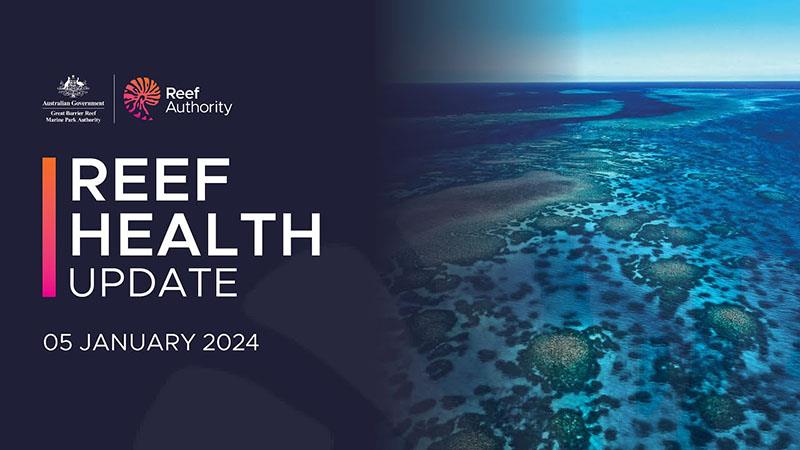
Great Barrier Reef health update
by Great Barrier Reef Marine Park Authority 10 Jan 2024 07:47 UTC

Reef health update | 05 January 2024 © Great Barrier Reef Marine Park Authority
As Australia's lead management agency for the Reef, we closely monitor Reef conditions throughout the year. From May to November each year, we issue regular Reef health reports. Over the summer, we publish weekly public information on the conditions of the Reef.
These updates are based on forecasts, water temperature heat mapping, in-water surveys, citizen science and aerial surveys.
Reef health update - Friday 05 January 2024
Tropical Cyclone Jasper entered the Great Barrier Reef Marine Park (Marine Park) as a Category 2 system on 13 December 2023, resulting in intense winds, high rainfall, and flooding in coastal communities between Innisfail and Cooktown.
The Great Barrier Reef Marine Park Authority (Reef Authority) continues to collaborate with partners to assess any potential impacts on key habitats such as coral reefs, seagrass meadows and islands following the elevated wave energy and flood plumes caused by the cyclone.
Temperatures
During December, sea surface temperatures between Cairns and Townsville were slightly below average, likely due to cloud cover and flooding caused by ex-Tropical Cyclone Jasper.
The remaining areas of the Marine Park had slightly above average sea surface temperatures, with very limited areas of the Northern Region reaching the highest.
Rainfall
Up to 100mm of rain fell in the northern and central catchments areas of the Marine Park, with up to 200mm falling in the southern catchment areas.
Reef health
Extensive flood plumes entering the Marine Park have decreased water salinity in coastal areas between Cooktown and Townsville.
Surveys conducted at a limited number of sites between Cairns to Cape Tribulation indicate that impacts from Tropical Cyclone Jasper were patchy, with some parts of the reef largely untouched while other areas of the same reef show some wave damage, primarily to branching and plate coral species.
Some isolated and minor coral bleaching was also seen at some reefs, likely resulting from freshwater inflow from flooding.
Reef management
The Reef Authority continues to monitor conditions on the Reef -- planning, preparing, and responding accordingly to any events over the high-risk summer period. It is currently working with tourism operators to assist their quick return to operations in the Cairns and Port Douglas areas following Tropical Cyclone Jasper.
Working with our extended observer network, we are still building our understanding of the impacts of the cyclone and flooding. Analysis of surveys at additional sites over the coming weeks will provide more extensive observations and allow a more detailed assessment of all aspects of reef health.
If you are out in the Marine Park, you can report what you see through the Eye on the Reef app, and make sure you know your zones to help do your bit in protecting this World Heritage-listed natural wonder.